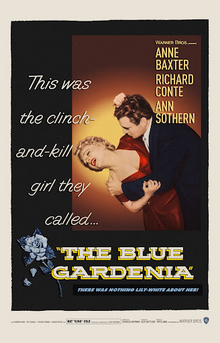
Anne Baxter was an American actress, star of Hollywood films, Broadway productions, and television series. She won an Academy Award and a Golden Globe, and was nominated for an Emmy.
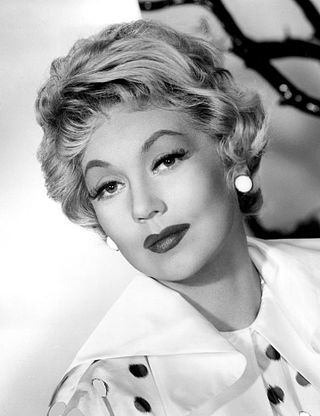
Ann Sothern was an American actress who worked on stage, radio, film, and television, in a career that spanned nearly six decades. Sothern began her career in the late 1920s in bit parts in films. In 1930, she made her Broadway stage debut and soon worked her way up to starring roles. In 1939, MGM cast her as Maisie Ravier, a brash yet lovable Brooklyn showgirl. The character proved to be popular and spawned a successful film series and a network radio series.

Joan Geraldine Bennett was an American stage, film, and television actress, one of three acting sisters from a show-business family. Beginning her career on the stage, Bennett appeared in more than 70 films from the era of silent films, well into the sound era. She is best remembered for her film noir femme fatale roles in director Fritz Lang's films—including Man Hunt (1941), The Woman in the Window (1944), and Scarlet Street (1945)—and for her television role as matriarch Elizabeth Collins Stoddard in the gothic 1960s soap opera Dark Shadows, for which she received an Emmy nomination in 1968.
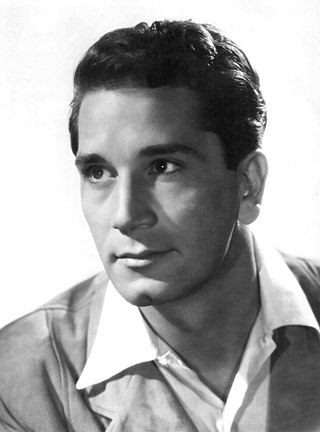
Nicholas Peter Conte, known professionally as Richard Conte, was an American actor. He appeared in more than 100 films from 1939 through the 1970s, including I'll Cry Tomorrow, Ocean's 11, and The Godfather.
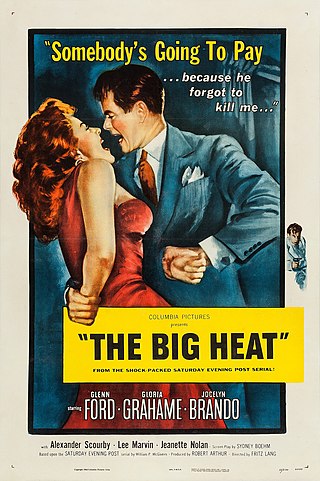
The Big Heat is a 1953 American film noir crime film directed by Fritz Lang starring Glenn Ford, Gloria Grahame, and Jocelyn Brando about a cop who takes on the crime syndicate that controls his city.
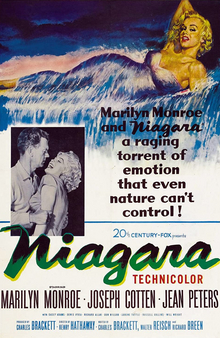
Niagara is a 1953 American film-noir thriller film directed by Henry Hathaway, produced by Charles Brackett, and written by Brackett, Richard L. Breen and Walter Reisch. The film stars Marilyn Monroe, Joseph Cotten, Jean Peters, and Max Showalter. It was one of 20th Century Fox's biggest box-office hits that year.
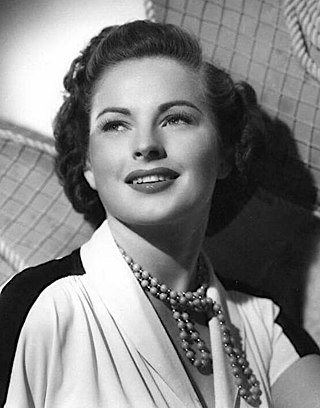
Coleen Gray was an American actress. She was best known for her roles in the films Nightmare Alley (1947), Red River (1948), and Stanley Kubrick's The Killing (1956).

Barton MacLane was an American actor, playwright, and screenwriter. He appeared in many classic films from the 1930s through the 1960s, including his role as General Martin Peterson on the 1960s NBC television comedy series I Dream of Jeannie, with Barbara Eden and Larry Hagman.
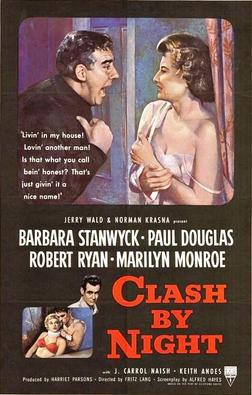
Clash by Night is a 1952 American film noir drama directed by Fritz Lang and starring Barbara Stanwyck, Paul Douglas, Robert Ryan, Marilyn Monroe and Keith Andes. The film is based on the 1941 play by Clifford Odets, adapted for the screen by writer Alfred Hayes. It is the first major film to credit Monroe before the title, albeit with fourth billing.

Macao is a 1952 American adventure film noir directed by Josef von Sternberg and Nicholas Ray and starring Robert Mitchum, Jane Russell, William Bendix, and Gloria Grahame. Shot in black-and-white, it was distributed by RKO Pictures.

Vera Louise Caspary was an American writer of novels, plays, screenplays, and short stories. Her best-known novel, Laura, was made into a successful movie. Though she claimed she was not a "real" mystery writer, her novels effectively merged women's quest for identity and love with murder plots. Independence is the key to her protagonists, with her novels revolving around women who are menaced, but who turn out to be neither victimized nor rescued damsels.

While the City Sleeps is a 1956 American film noir directed by Fritz Lang and starring Dana Andrews, Rhonda Fleming, George Sanders, Howard Duff, Thomas Mitchell, Vincent Price, John Drew Barrymore and Ida Lupino. Written by Casey Robinson, the newspaper drama was based on The Bloody Spur by Charles Einstein, which was inspired by the case of Chicago serial killer William Heirens. Five decades after the film's release, critic Dennis Schwartz wrote, "Fritz Lang ('M') directs his most under-appreciated great film, more a social commentary than a straight crime drama."
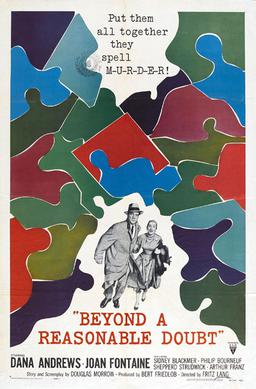
Beyond a Reasonable Doubt is a 1956 American film noir legal drama directed by Fritz Lang and written by Douglas Morrow. The film stars Dana Andrews, Joan Fontaine, Sidney Blackmer, and Arthur Franz. It was Lang's second film for producer Bert E. Friedlob, and the last American film he directed.
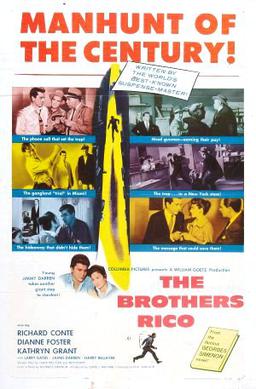
The Brothers Rico is a 1957 American crime film noir directed by Phil Karlson and starring Richard Conte, Dianne Foster and Kathryn Grant.

Werner Peters was a German film actor. He appeared in 102 films between 1947 and 1971.
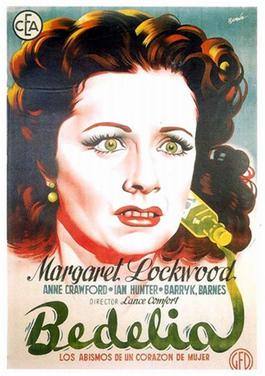
Bedelia is a 1946 British melodrama film directed by Lance Comfort and starring Margaret Lockwood, Ian Hunter and Barry K. Barnes. It is an adaptation of the 1945 novel Bedelia by Vera Caspary with events relocated from the United States to Monaco and England.

Who Killed Teddy Bear is a 1965 American neo-noir psychological crime thriller film, directed by Joseph Cates. Written by Arnold Drake, with a screenplay by Drake and Leon Tokatyan, the film was produced by Everett Rosenthal under the banner of Phillips Productions. It stars Sal Mineo, Juliet Prowse, Jan Murray and Elaine Stritch in lead roles. It resolves around a busboy at a disco having sexual problems related to events in his childhood, who becomes obsessed with a disc jockey at the club, leading to obscene phone calls, voyeurism and more. A police detective is similarly obsessed with sexual materials, leading him to become personally involved in the case.
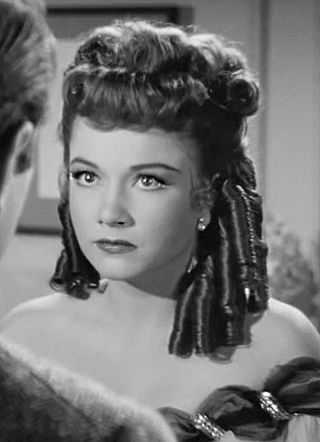
Anne Baxter (1923–1985) was an American actress who had an extensive career in film, television, and on stage. She made her acting debut at the age of 13 on stage in the Broadway play Seen, But Not Heard in 1936. Four years later, Baxter starred in her first feature film, the western 20 Mule Team (1940). She appeared in Orson Welles' period drama The Magnificent Ambersons (1942), with Joseph Cotten and Dolores Costello, and followed this with a lead role in Billy Wilder's Five Graves to Cairo (1943). In 1946, she starred as a young woman suffering from alcoholism in the drama The Razor's Edge, for which she won the Academy Award for Best Supporting Actress. Two years later, Baxter appeared with Gregory Peck in the western Yellow Sky.

"The Night America Trembled" is a television dramatization of the public reaction to the 1938 radio broadcast of "The War of the Worlds" that aired September 9, 1957, as an episode of the CBS series Westinghouse Studio One. Hosted by Edward R. Murrow, the live documentary play was written by Nelson S. Bond, and uses excerpts of the radio script by Howard E. Koch.

Ruth Storey was an American actress and the first wife of actor Richard Conte. After retiring from acting, she became a psychotherapist.
